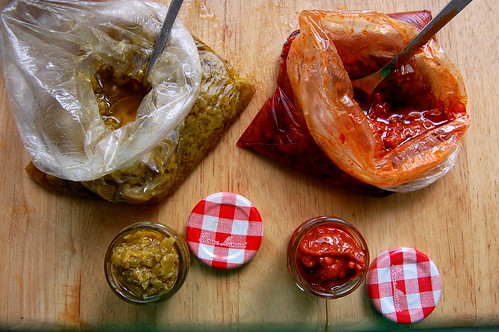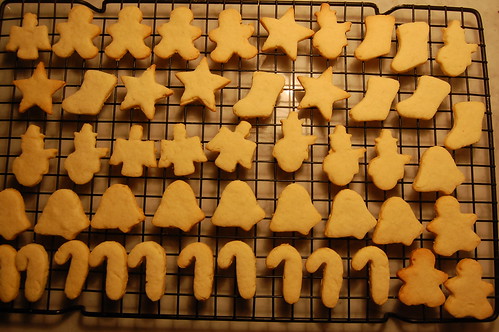25 December 2013
20 December 2013
Paul's Kifli Cookies
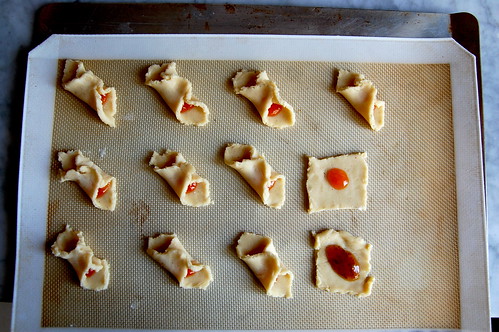
I had so many tasty holiday recipes I wanted to try this month, cookies to bake and new recipes to share with you readers. Instead, this month has been pretty much a disaster. We have been in a family spate of loosing things (wedding rings! check books! though the former was luckily dug out of a trash can full of coffee grounds).
We learned this week that we have to move out of our home because of a major mold problem, which had caused some health issues, and that we had to move immediately (tomorrow actually). Moving, in case you didn't know, is pretty terrible. We've lived in our home for a year and a half and we love our neighborhood, I know all the shop owner's names and I finally figured out the donut guy's schedule. Also, moving five days before Christmas, and one day before you leave on your Christmas holiday, with no advance notice, is pretty stressful.
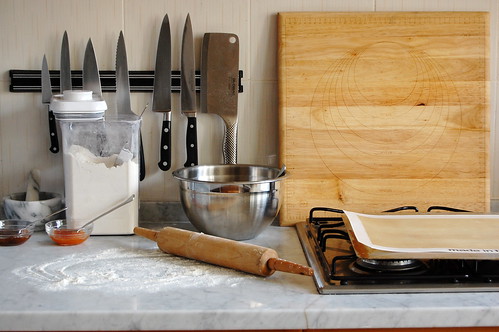
In a twist of humor, the only available place for us to move to is a palatial residence which is a former embassy. So tomorrow we'll be taking up residence in a mansion replete with hand-painted murals of galloping horses, tile work, a hammam, lemon trees, and more chandeliers than anyone should ever have. The one piece of bad news is that the home does not currently have internet.
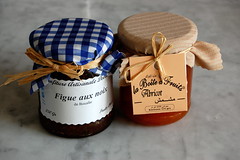
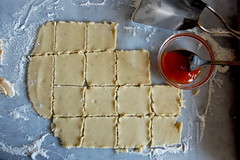

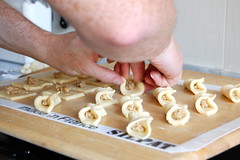
Luckily, we did have time to make a few cookies in the past few weeks. Several years ago Paul embarked on a project to make kifli cookies, a Hungarian delicacy with a myriad of spellings. He settled on a recipe, and has been making it for the past few years. It involves a delectable cream cheese dough wrapped around a jam or nut filling. We had saved a carefully hoarded jar of cream cheese just to make these cookies. Paul had to stop me from eating massive quantities of dough, and we got to share cookies with some of my coworkers. I like that we are starting to build a family repertoire of cookies, and that one day maybe people will remember us fondly every year for our holiday kifli cookies. It's a good reminder of all that things that make a family and a home that have nothing to do with four walls or perfectly wrapped presents.
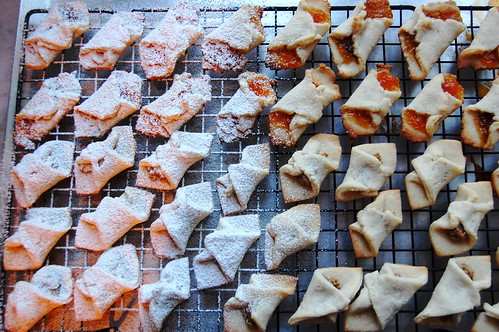
Paul's Kifli Cookies
This recipe was written by Paul and is therefore probably far more thoroughly thought-out than my usual recipes! Makes about 3 dozen.
1 ⅓ cups all-purpose flour, plus additional for work surface
¼ teaspoon salt
¼ teaspoon ground cinnamon
⅛ teaspoon ground nutmeg
⅛ teaspoon ground allspice
4 ounces cream cheese, softened
4 ounces (½ cup) unsalted butter, softened
⅜ cup granulated sugar
1 cap-ful of vanilla extract
For the filling: Your favorite jam or spiked walnut frangipane (recipe follows)
Preheat oven to 350 degrees.
1. Whisk the flour, salt, and spices together in a large bowl and set aside.
2.
Cream the cream cheese, butter, and sugar together until pale yellow
and fluffy, about 10 minutes using a hand-held electric mixer. Cream in
vanilla extract.
3.
Add the flour mixture to the creamed butter and cream cheese in two
batches, stirring until just combined after each addition. The dough
will be quite soft but should not be sticky.
4.
Divide the dough into two equal squares. Wrap each square in plastic
wrap and chill for at least 1 hour until firm. The dough will keep for
several days in the refrigerator or can be wrapped tightly and frozen
for up to a month.
5.
When the dough is thoroughly chilled, liberally flour a work surface, a
rolling pin, and one of the dough squares. Roll out the dough into a
¼-inch thick square. (You can also roll out the dough between two pieces
of wax paper.) Use a sharp knife, pastry or pizza cutter to cut the
dough into four equal strips lengthwise and then four equal strips
crosswise, creating 16 small squares. Repeat with the remaining dough,
or working in batches, move onto the filling.
6. Spoon about 1/4 to 1/3 teaspoon of jam or frangipane filling in the center of each square. (If using frangipane, it’s best to use slightly less filling because the frangipane
will expand during baking.) Pinch together two opposite corners of each
square, and then fold the resulting point over to one side.
7. Arrange the cookies on cookie sheets lined with parchment paper or silpats and bake for 12 minutes. Remove the cookies from the oven and allow to cool thoroughly.
8. Dust the cooled kifflies
thoroughly with powdered sugar sifted through a fine mesh sieve.
Cookies may be stored in an airtight plastic container in layers with
parchment paper between each layer.
Spiked Walnut Frangipane Filling
½ cup finely ground walnuts
1 tablespoon sugar
1 tablespoon Amaretto or rum (or your favorite nut extract)
1 egg white, stiffly beaten
Stir together ingredients with a fork.
15 December 2013
North African Shortbread Cookies

This is how I feel about Christmas cookies the week after Thanksgiving:
- Yay, it's time to make cookies! There are so many kinds, what will we make this year?! Maybe I'll finally make Martha Stewart worthy cookies with royal icing and perfectly placed glitter. And of course we have to make the traditional ones, cut out in shapes, and then there's those ones I bookmarked last year....
- Argh! Why have I not made Christmas cookies yet! I'm just too busy at work and I still need to get presents for people. Okay, I'm going to make cookies tonight. [Cut to me making cookies, the kitchen covered in powdered sugar, and realizing it's 9 pm and there's no food for dinner.]
There is one thing you'll have to get over about these cookies: they are made with vegetable oil. But wait, isn't everything better with butter? I thought so too, but trust me, these cookies are not better with butter. I tested this recipe with vegetable oil, and my office devoured the delicious buttery cookies in minutes. Then I tried the recipe with butter .... you should not try the recipe with butter. The dough crumbled and wouldn't stick together, and the baked cookies formed weird lumpy bumps. They were tasty, but ugly. So use the oil, and the rest of the recipe is a snap!
Need more cookie ideas? Check out the finally updated recipe index, for more! There's lots of cookie recipes under the holiday tab.
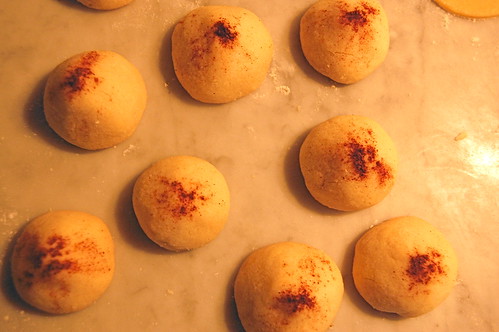
North African Shortbread Cookies (Ghiribiya)
This may be the easiest recipe on earth, as I learned it, it's just: one part sugar, one part oil, three parts flour. I've tweaked it a bit for deliciousness, but it is extremely straight forward. They also make the same cookies in Algeria with semolina flour and with chickpea flour (which is gluten free), but I haven't tried those variations.
1 1/2 cups all-purpose flour
1/4 cup sugar
1/4 cup powdered sugar
1/4 teaspoon salt (crushed sea salt is good)
1/2 cup neutral oil (safflower, canola, etc)
cinnamon, for sprinkling
1. Preheat oven to 350F. Line a baking sheet with parchment paper.
2. Place all the dry ingredients in a bowl and mix gently. Add in the oil until the mixture becomes a paste. If the mixture is still too dry, you can add 1-2 tablespoons more oil. Press the mixture together with a spatula to form a lump in the bowl.
3. Pinch off rounds of the dough and form into gentle pyramids. Place on baking sheet. Sprinkle the tops with the cinnamon. Bake for 14-16 minutes -- you will see small lines form along the edges of the cookies, but they should not brown. Let cool completely befoe eating, the cookies will harden as they cool.
11 December 2013
Sweet Potatoes Anna
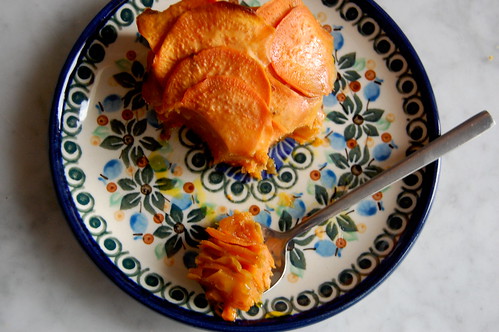
A lot of expat life is about assessing what you don't have in a particular location, and then trying to figure out how to get it. Booze, brussel sprouts, Christmas trees, you name it and an expat has smuggled it, grown it, or Macgyvered it. In this case: sweet potatoes. Much to my surprise, they actually sell sweet potatoes in Algeria, but they bear little resemblance to American sweet potatoes. The sweet potatoes here look similar on the outside, but inside they are white and oddly starchy/sticky in consistency. Sometimes I think produce here is like one long botany lesson. (These specimens may be a true yam? And not what New York city groceries mistakenly called yams.) I eat them sometimes, but without the joy of a gloriously orange sweet potato.
When I hoarded some precious sweet potatoes back from America in November, I knew exactly what I was going to do with them. I was going to make Sweet Potatoes Anna. This recipe first appeared in the NYTimes several years ago, it had a brief flourish on some cooking blogs, and then faded into relative obscurity, except in my kitchen. I made Sweet Potatoes Anna probably 50 times over one winter. I may have been in danger of turning orange. I credit this recipe with turning my husband, previously an avowed sweet-potato-hater, into someone fighting me for the last scraps of gratin. It's so great, I think I've made it for Thanksgiving three years in a row. It helps that it is also super easy when you have a big meal to plan.
It's so good that people often ask me for the recipe (even French friends who tell you they can't cook at all and then invite you to their party where they serve a massive spread of homemade pate and rilletes on toast and those little savory loaf cakes French people make, even those people!). And, even worse, I'm only finally telling you about this recipe now! I know, I'm a terrible friend. But if you'll forgive me, there's still plenty of time left for more Sweet Potatoes Anna this winter.*
*Although not for me, but I'm considering asking someone to ship me a box of sweet potatoes. They'll keep in transit for three weeks in the cold, right??
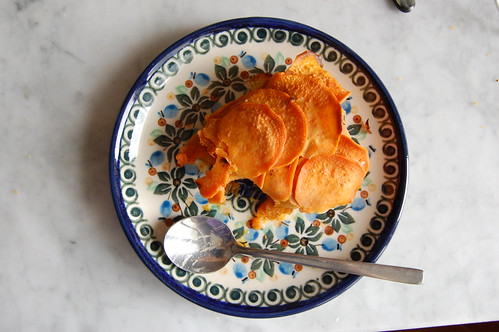
Sweet Potatoes Anna
This recipe is easily adjustable to any size you want. I often make a very large gratin of this for Thanksgiving or for a crowd. Adapted from the New York Times.
4 medium-sized sweet potatoes (about 2.5 lbs), peeled
8 tablespoons (4 oz) butter, melted
3 tablespoons coarse sea salt
1 tablespoon Aleppo pepper or red pepper flakes (both work equally well)
equipment: a 10-inch round ceramic or glass baking dish or cast iron skillet
1. Preheat oven to 425F. Place the sea salt and Aleppo pepper in a bowl and mix to combine.
2. Using a mandoline thinly slice the peeled sweet potatoes (about 1/8" thick). Place the sweet potatoes in a large bowl, add the melted butter, and stir to coat.
3. Layer the sweet potatoes slices in concentric overlapping circles over the bottom of your dish. Sprinkle the layer lightly with the salt/pepper mix. Continue to make overlapping layers, sprinkling each layer with salt/pepper, until all your potatoes are used up. You will not use all the salt mixture. (You can try and save your prettiest slices for the top layer if you're OCD like that). Scrape up any butter that's stuck to the bottom of the bowl and dab it over the top of the gratin.
4. Cover the dish tightly with aluminum foil, place in the oven and bake for 30 minutes. Uncover the dish and bake for another 20-30 minutes, until tender when pierced through with a knife. If the potatoes start to brown too much you can cover the dish lightly with foil again. Serve warm.
07 December 2013
Seeded Buckwheat Butter Cookies
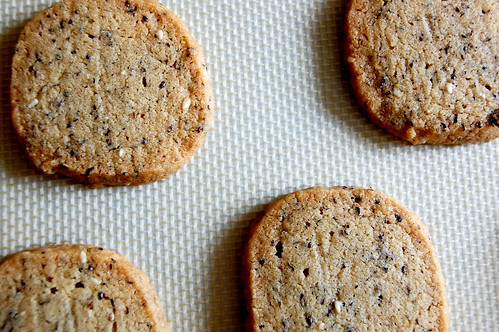
I was hesitant to post this cookie recipe at Christmas time when everyone is making over-the-top sugar coated confections. These little cookies are extraordinarily tasty, but they're a bit plain jane to look at. They're like a shortbread cookie in texture, but they are headily scented with vanilla and have a lovely crunch from a scattering of sesame and poppy seeds. In the rush of Christmas cookie tins, these cookies might not look like much, but their flavor should win them a legion of fans.
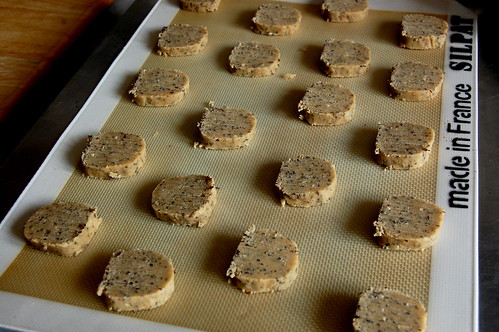
The recipe is adapted from the quite-famous-on-the-internet Alice Medrich buckwheat and cocoa nibs cookies. Needless to say, that recipe is beloved because it's pretty darn good. I didn't have cocoa nibs, so I originally thought to substitute walnuts, but I worried that their large size would make the delicate cookie crumble. Plus, with my tendency to make late night Amazon orders of random health foods (hello spirulina!), we have a pantry burdened with a variety of seeds.
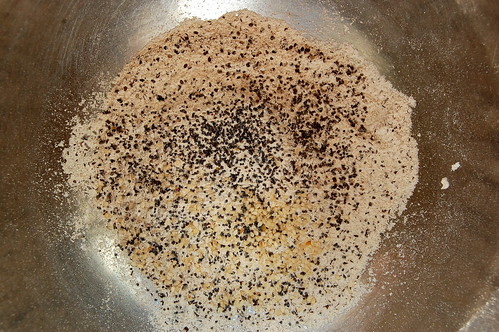
The cookies are very easy to make and, though the dough is a bit delicate, you could also roll them out and cut them into shapes for the holidays. Just make sure to keep your dough well-chilled if you do that. You can choose any kind of seeds you like - I used a mix of poppy seed, chia seeds, and sesame seeds. Sadly, it didn't make much of a dent in our over-burdened pantry, but it made some very tasty cookies.
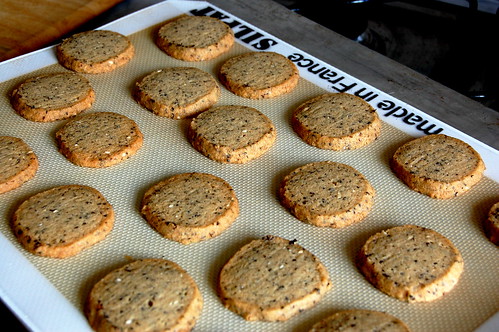
Seeded Buckwheat Butter Cookies
I haven't tried this, but I would imagine these cookies could be made gluten-free by substituting a GF-flour mix in for the half cup of regular flour.1/2 cup (4 oz) butter, softened
1/3 cup brown sugar
1/4 teaspoon salt
1 teaspoon vanilla extract
1/4 cup mixed seeds (for example, 2 tbl sesame, 1 tbl chia, and 1 tbl poppy seeds)
1/2 cup buckwheat flour
1/2 cup flour
2. Form the dough into a log, wrap the log in plastic wrap, and refrigerate for 3-4 hours, until chilled and firm.
3. Preheat oven to 325F. Slice cookies 1/4 inch thick and arrange on a parchment lined baking sheet. Bake 16-18 minutes, until edges are just barely golden (do not let cookies brown). Let cool on a rack.
03 December 2013
Freekia, Squash, and Apple Salad with Honey-Harissa Dressing
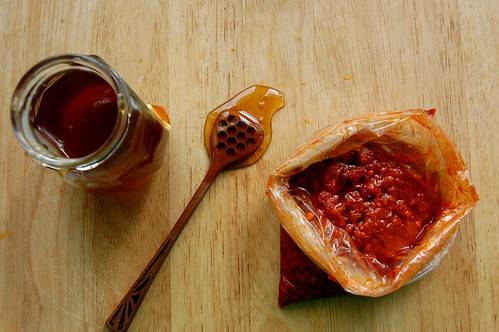
First of all, let's get one thing out of the way. That red saucy stuff up there? That is harissa. There is no such thing as harissa powder or some super stiff harissa paste, just that good ole super spicy oily soft peppery harissa. There isn't a lot I get to share from Algeria, but this is one thing I know for sure. (So please don't ask me about Algeria's recent currency fluctuations, I still haven't wrapped my head around that!) There. Aren't you glad we got that out of the way? I don't know about you, but stuff like that really bugs me.
So, second of all, there are approximately 3 million recipes out there on the internets for a farro and squash salad. Seriously, google it. This is my version, inspired by what I have access to, and what was lying around in the fridge that day. We can't get farro so I used freekia (toasted green wheat), but you can use any sort of hearty grain you'd like. I threw in the white beans because I had some leftover ones waiting in the fridge. Personally, I think beans in salad can quickly turn into gloopy smushy things, so I like to toast my white beans, leaving them crisp on the edges, before adding them to salads.
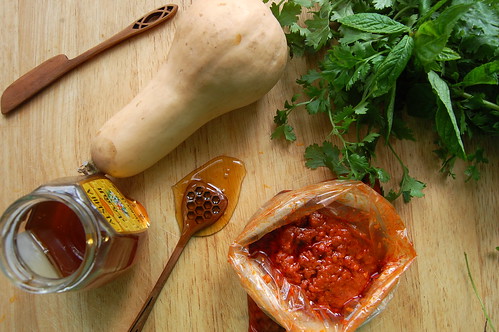
The real genius here (and I will admit I borrowed it from this site, who borrowed it from the Smitten Kitchen Cookbook), is the honey-harissa dressing. You need some honey-harissa dressing in your life folks. Think of all the things it can brighten up: salads, boring old chicken, rice pilafs, etc. I recommend you make the dressing according to taste, rather than following the recipe exactly, since it will depend on how spicy your harissa is and how mild your honey is. Happy harissa hunting and stay tuned for some holiday cookie recipes soon!
P.S. You would think after a year and a half of living in Algeria I would have a harissa recipe for you. But alas, like most other Algerians I buy my harissa from a vendor (my preferred guy in right near the date section at the back of Premier Mai). However, I'm hoping we'll learn when the harissa peppers come back into season in the spring.
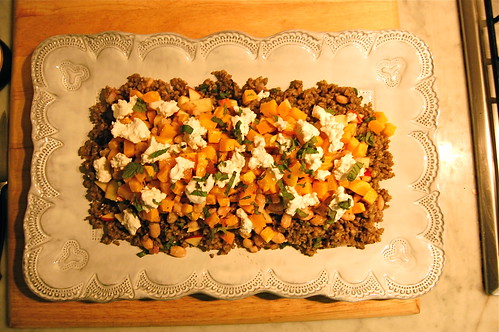
Freekia, Squash, and Apple Salad with Honey-Harissa Dressing
There are several ingredients and steps here, but really, everything comes together very quickly once you get going. You could even chop and prep the vegetables a day or two before to help expedite things. This is a nice one-bowl weeknight dinner this time of year.
1 cup freekia (or farro, wheatberries, etc)
1/2 teaspoon each allspice and nutmeg
1/4 of a red onion, minced
juice of 1 lemon
750 grams of peeled and diced butternut squash or pumpkin
1 small apple
4 sprigs of mint
1 cup of white beans
1/2 cup crumbled goat cheese
olive oil, salt
1/4 cup honey
1 teaspoon or 1 tablespoon harissa* (depending on how spicy yours is, if you don't have harissa, Sriracha sauce is a great substitute)
1. Preheat oven to 425F. Place the minced onion in a small bowl and add the lemon juice to cover. Let the onion sit while you do the following steps.
2. Heat some olive oil in a small pot. Add the freekia, allspice, and nutmeg and saute gently until fragrant. Add a large pinch of salt and 2 1/4 cups water. Bring to a simmer, cover the pot and let simmer for 30 minutes, or until puffed and water is absorbed. (For farro or wheatberries, check package directions for cooking time and water ratio).
3. Toss the squash with olive oil and salt and roast on a foil-lined baking sheet until tender and browned on the edges. About 20-30 minutes.
4. Heat some olive oil (if you have it, duck fat or bacon fat also work nicely here) in a pan, enough to thickly coat the bottom of the pan. When the pan is nice and hot, add the white beans and cook until nicely browned on both sides. Set aside.
5. Finely dice the apple, set aside.
6. Drain the lemon juice from the onions into a small bowl. Add 1/3 a cup olive oil, the honey and harissa to the lemon juice. Whisk together the dressing and taste for seasoning - you may need more honey or more harissa. The dressing should be thick.
7. Fold the mint and 1 tablespoon of the dressing into the freekia. Spread the freekia on a platter. Scatter the white beans, apple, and squash over the salad. Scatter the goat cheese over the salad. Drizzle the remaining the dressing over the salad. Serve.
* Sur La Table and other specialty food stores sell a decent version of jarred harissa.
30 November 2013
Holiday Weekend Reading List
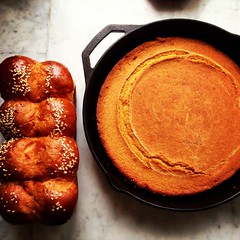

I thought I would share some of our holiday pictures here for those of you who don't follow along on Instagram. I was really excited to get to share Thanksgiving with some of our Algerian and French guests, not to mention our American friends. At dinner we were dicussing how Thanksgiving is such a wonderful holiday because of all the things it's not -- not religious, not about giving gifts, not about a manadatory guest list. Thanksgiving can be with your family, with your oldest friends, or a chance to make new friends. It's about sharing a meal and quality time with people you enjoy, something we don't do often enough in my opinion.
One of our international guests even told me at the end of the evening that she wished her country had a holiday like Thanksgiving, which pretty much made my day. Plus several people asked for recipes and one guest even insisted (really truly insisted!) on helping do all the dishes before he left. I'm pretty sure there's nothing better than waking up the day after Thanksgiving and not having to do any clean-up! I hope you all are having relaxing holiday weekends, and I thought I'd share some things I've enjoyed reading recently.
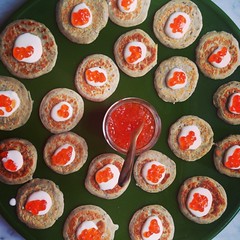

Spot-on Turkey Day cartoons over at the New Yorker.
Pie Crust Decorating Ideas in time for the holiday season. I made the decoration on our rye pie (below) with a grapefruit spoon, which has serrated edges. Also this Salty Honey Pie keeps popping up everywhere.
An article on Camus and Algeria, who would have been 100 this year.
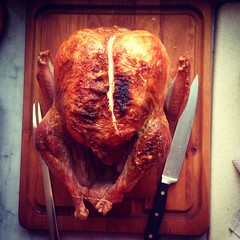
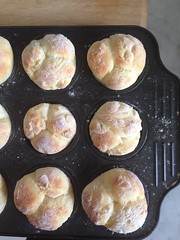
I am totally obsessed with this recipe for homemade almond extract over at Ciao Samin (a great blog). I know what I'll be doing with this spring's apricots.
Also on the list of recipes I'm obsessed with: Libyan Sfinz. Fried dough with a poached egg in the middle? Sign me up.
A little bit outdated, but I loved this post about the last of the summer tomatoes from Saipua (incidentally, Saipua helped me find our amazing wedding planner, and they do beautiful things with flowers). Read it some cold dreary winter day and dream about your next summer tomato.
I finally watched the movie Frances Ha (Netflix/iTunes) which is so sweet and endearing. A movie about a young modern dancer trying to make her way in New York, well I can't imagine why I would be interested in that?! But really, I think anyone would enjoy this little black-and-white film.
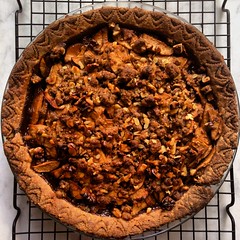
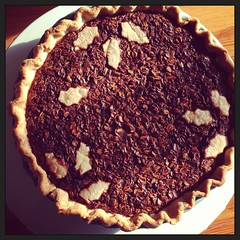
Hope everyone had a great and delicious holiday!
25 November 2013
Thanksgiving Ideas

Bringing Thanksgiving to North Africa, one frozen turkey at a time.
Well, I was going to share a wheat, squash, and apple salad with you today, but let's be real. You're not doing anything except planning for Thanksgiving and nibbling at this or that this week. Plus, I went searching for my own cornbread dressing recipe on this site only to find the little search recipe on the right there is broken! (I cannot figure out how to fix it, but I'll keep flexing my coding skills). So, in lieu of that salad -- you'll get it next week -- let's talk turkey.
I've made Thanksgiving enough times to know that I can kind of wing it. I was in the U.S. last week so I got to bring a whole Thanksgiving meal home in my suitcase (much easier than trying to convince Whole Foods that yes, I really did want them to freeze their fresh turkey). My turkey roasting technique is pretty simple: cover with butter and salt, roast, turning it half-way through, use a digital thermometer, and that's about it. The cranberry sauce I make up every time, and it always ends up tasty. Ditto the gravy. For other dishes I'm making our usual favorites. The menu as I've planned it is:
Appetizers: Latkes with creme fraiche and salmon roe (happy Hannukkah!)
- Turkey with Mushroom-Armagnac Gravy
- Lida Lee's Cornbread Dressing
- Sweet Potatoes Anna (with Aleppo pepper)
- Shaved Brussel Sprouts with Pecans and Bacon
- I'm debating making this spinach cake, baked in a madeleine pan as a sort of play on the New Orleans classic spinach madeleine. We'll see.
- Cranberry Sauce with Orange and Star Anise
- My Mom's Rolls (how on earth is this recipe not on the blog!)
- Apple-Pear Pie with Rye Crust and Rye-Walnut Crumble
- Oatmeal Black-Bottom Pie
20 November 2013
Sicilian Semolina Swirl Rolls
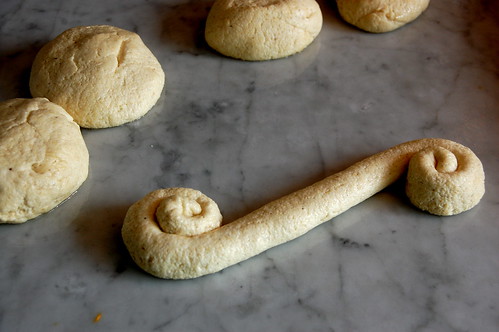
(I know, I have to stop it with the aliteration. I just can't help myself.) We spent two weeks in Sicily in October and, for all its similarities with North Africa, I couldn't help remarking on how different it felt. Everywhere I went people pointed out the parallels to me: "we use this Arabic word for this tree/neighborhood/food," "in this town couscous is the specialty," "this church was built but North African craftsmen," "we make orange and fennel salads too." But of course, all I could see were the differences: infrastructure, working ATM's, bars, wine, capacity for production, historic preservation, lack of checkpoints, clean streets!
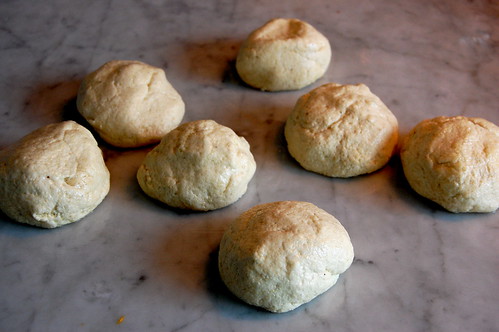
But of course, perhaps I loved Sicily so much because it is so close to many things I love. All the Arabic architecture, the muqqarnas and mashrabbiyyas. The emphasis on seasonal local produce. The tiny regional specialties that are everywhere in one small town, but completely absent at the next town over. The fierce opinions about how food should be made and enjoyed. Like in Algeria, where almost every traditional bread is made with semolina flour, Sicilian bread is also made with semolina flour, often called pane giallo for its yellow color.

At home I found this recipe in one of Anissa Helou's books and thought it appropriate to make for our weekly bread. The bread is easy to make, just make sure to use fine grade semolina flour. At first, I thought the resulting bread was a bit too plain, although Paul, official blog taster, quite liked them. But then I toasted them with butter, and dipped them into some soup, and they started to grow on me. There is something lovely about their plain cornmeal-y sweetness, sort of like my grandmother's no-nonsense cast iron skillet cornbread. Crackly and ready to absorb up other flavors, and perfect for fall.
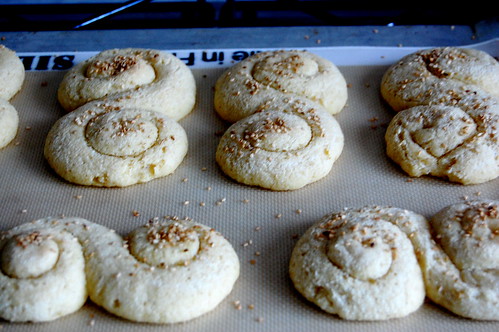
Sicilian Semolina Swirl Rolls
Heavily adapted from Anissa Helou.
1 teaspoon active dry yeast or 1 1/2 teaspoons instant SAF yeast
3 cups fine semolina
1/4 cup + 1 cup warm water
2 teaspoons salt
all-purpose flour for kneading
olive oil for greasing
1/4 cup sesame seeds for sprinkling
1. Place yeast in the bottom of a large ceramic bowl and add 1/4 cup warm water. Let sit until bubbly. Add in the semolina and salt, stirring with a wooden spoon to combine. Add the remaining 1 cup of warm water and stir until a rough dough forms. Begin to gently knead the dough with your hands so that it comes together. Continue to knead the dough, adding a little bit of flour as necessary to keep from sticking. I usually knead in the bowl, since I'm lazy, but you can turn it out and knead on a board also. Knead the dough for a good 5-8 minutes, semolina doughs need extra kneading to become smooth and supple.
2. Lightly coat the dough ball with olive oil to prevent sticking, cover the bowl with plastic wrap, and let rise in a warm place for 1 hour.
3. After one hour, knock down the dough, turn it over, and cover it again with plastic wrap and let rise another 45 minutes - 1 hour, until doubled in volume.
4. For the next step, I work directly on my countertop, or you could use a marble board. Grease the counter top well with olive oil, pull the dough apart into 6 or seven easy sized balls. Roll the balls around on the countertop to grease them, then let rest for 15 minutes (don't skip this step!).
5. Preheat oven to 450F. Line a baking sheet with parchment or a nonstick mat and scatter the mat with sesame seeds. Roll out each dough ball into a long rope. Roll each end of the rope in opposite directions to form an S swirl. Transfer the rolls to the baking sheet and sprinkle the top of the rolls with more sesame seeds. Cover the rolls lightly with plastic wrap and let the rolls rise for 45 minutes.
6. When the rolls are risen, transfer them to the oven and bake for 20-25 minutes, until puffed and lightly golden. Cool on a rack.
16 November 2013
Fennel, Turnip, and Apple Soup
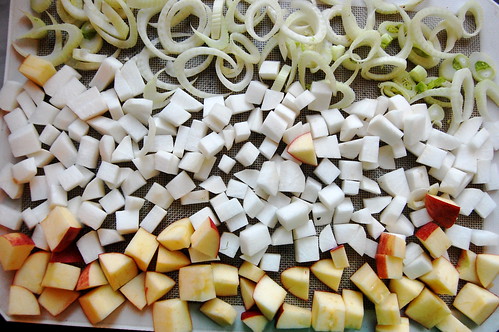
You know it's fall in Algiers when it starts to rain. All the time. It happened on Wednesday, constant steady rain, letting up briefly and then pouring down in thick sheets. The same for Thursday. And now I sit here Friday, where we had a few hours of brightness in the early morning, before the clouds rolled in and I could hear the pitter patter on the windowsills.
I like the rain. After nearly five months of straight sunshine, the rain seems to tell you that it's okay to stay inside. To read a book or curl up with a cup of good coffee and my laptop. To wear fuzzy socks. (I think fuzzy socks make far more appearances on this blog than one would think necessary for a cooking blog). I'm sure in March I will be cursing the constant rain, but for now it's pleasantly indulgent.
Naturally, we've been making a lot of soups these past two weeks. Simple soups like butternut squash, or red lentil and tomato. I've made this soup a few times now using both turnips and winter squash. Both versions are lovely and very different. Turnips are always, always available here, whereas at the markets the fennel and winter squash seasons are in full swing. The unusual thing about this soup is that I have you dry-roast the vegetables. I figured there's no need to coat the vegetables in oil if they are just going to go in a soup anyway (besides the oil ends up making the soup greasy). Dry-roasting is very simple and brings out the natural sweetness of the vegetables. I leave the skins on the apple which adds a nice color and flavor to the soup, and is healthier that way too!
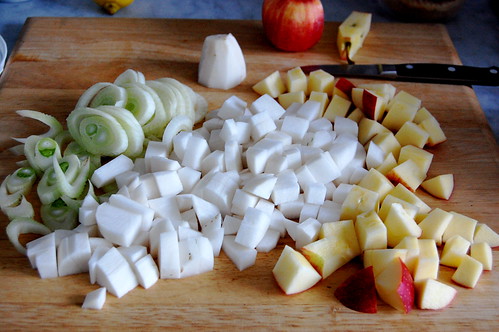
Fennel, Turnip, and Apple Soup
You can also make a fennel, pumpkin, and apple soup. Simply substitute 1 kilo of peeled, chopped winter squash (pumpkin, butternut, kabocha, etc). Because both turnips and fennel are rather watery vegetables you don't add a lot of extra liquid to the soup.
1/2 of a medium-sized onion, diced
2 cloves garlic, sliced
2 fennel bulbs
3 large turnips (about 1 kilo, 2.2 pounds)
2 large apples
1/4 cup white wine (optional)
1 1/2 cups chicken stock (preferably homemade)
2 teaspoons kosher salt
1/2 teaspoon nutmeg (or to taste)
Toppings: creme fraiche, sauteed bacon or pancetta, more nutmeg, or thyme
1. Preheat oven to 425F. Slice the fennel bulbs, peel and chop the turnips, and chop (don't peel) the apples. Line two baking sheets with parchment or silicone baking mats. Scatter the fennel, turnips, and apples on the sheets. Roast the vegetables until lightly browned on the edges. They will be slightly softened but not all the way cooked through. Set aside.
2. Heat a large glug of olive oil over medium heat in a soup pot. Add in the diced onion and saute, stirring occasionally, until the onions are soft and starting to caramelize, about 10 minutes. Add the garlic, allow to soften for about a minute. Deglaze the pan with white wine, stirring to scrape up any brown bits.
3. Add in the chicken stock, the vegetables, and the salt. Bring to a simmer, cover the soup pot and simmer for 30-40 minutes. The liquid should come up just to the sides of the vegetables, it will seem like less liquid than normal, but that's okay. If the pan starts to look dry add a touch of water.
4. Turn off the heat, stir in the nutmeg, and let cool for about 10 minutes. Puree the soup in a blender or with a hand blender. If the soup is very thick you can add some water to thin it. Taste for seasoning. Reheat the soup and serve with any desired toppings.
11 November 2013
Paul's Plum Pandowdy
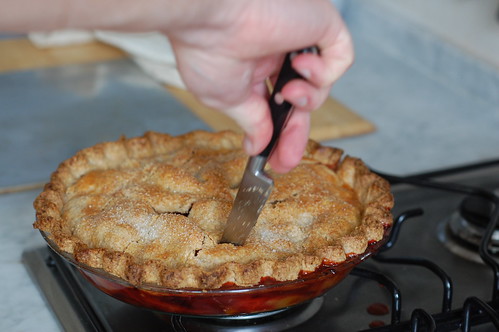
How's that for aliteration, huh? Paul's plum pandowdy. But the best part of this dish, the file-away-in-the-recipe-box part, isn't even in the title, because it's the delicious rye crust. But before we get to that, first, the plum pandowdy. Algerians can grow some serious plums. Tiny glowing orange ones, dark purple prune plums, red plums, plums are available here for most of the year (eclipsed in winter by citrus season) and are reliably delicious. There aren't many pies and tarts made with plums, but they work beautifully. If you're worried plums would be too runny for a pie, aim for firm-ripe (not over-ripe mushy) plums, and dash of cornstarch takes care of the rest.
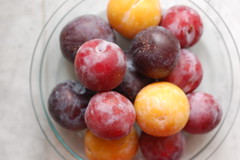

A pandowdy is, simply, a pie without a bottom crust. Halfway through the baking, you cut some slits in the top crust to "dowdy the pan" allowing the juices of the pie to bubble through the slits. We started off with this cornmeal pandowdy for inspiration, but instead of a cornmeal crust I made a rye crust from the excellent Kim Boyce. I've talked about how much I like putting rye into baked goods so often here, if I talk about it again you'll probably want to poke my eyes out. But seriously, rye pie crust needs to be in your arsenal stat.
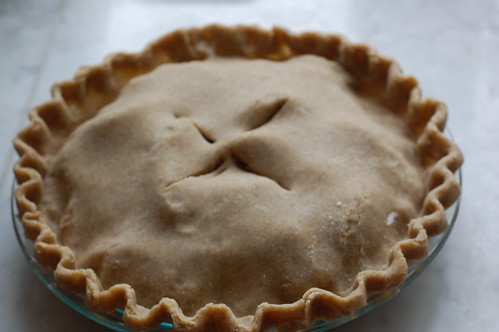
Luckily, this recipe makes a double crust so you can make a pandowdy, and then still make another pie. A pear pie with rye crust and rye crumble? Oh yes, that's happening next. There might even be a rye crust at Thanksgiving. What about you all? Are you making pies, pandowdies, buckles, or crisps for the holiday? Do you have a secret crust weapon? Let me know in the comments.
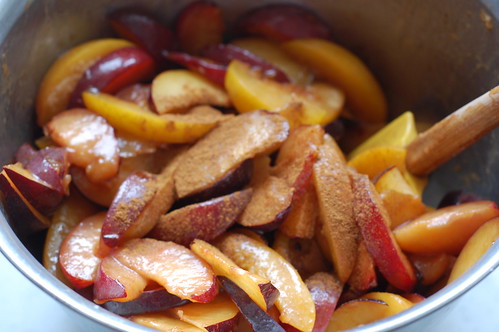
Plum Pandowdy with Rye Crust
A couple notes: one, don't make the fluted crust like you see in the pictures here, it will prevent your crust from dowdy-ing. Is there anything worse than an undowdied crust?! Second, you need slightly less crust than normal for this, since it only goes over the top and not the sides of the pie. Therefore, when dividing your dough make one dough ball slightly smaller than the other, and use the small one for the pandowdy.
Filling:
10 medium-sized firm-ripe plums, sliced
3 tablespoons brown sugar
1 teaspoon cinnamon
1 level tablespoon cornstarch
2 tablespoons butter
1 squeeze lemon juice (omit if your plums are on the tart size)
Rye Crust:
1 1/3 cups all-purpose flour
1 1/3 cups rye flour
pinch salt
1 tablespoon sugar
16 tablespoons (2 sticks, 8 oz) butter, cold and cut into small pieces
1/2 to 2/3 cup ice water
1 1/2 teaspoons apple cider vinegar
1 beaten egg white and 2 tablespoons white sugar for glaze
1. Make your crust: Combine flours, salt, and sugar in a large bowl. Rub the butter into the flour with your fingers, two knives, or a pastry cutter. Mix the water and vinegar in a small bowl, measure out 1/2 cup of of the liquid. Quickly stir the 1/2 cup of liquid into the pie crust. Mix until the liquid is evenly distributed and the dough holds together when you squeeze it. It will be fairly dry. If you need more moisture add the liquid 1 tbl at a time.
2. Divide the dough into two, wrap in plastic, and refrigerate for at least 1 hour. (You can freeze the second crust, since you won' t be using it).
3. Make the filling: Preheat oven to 375F. Combine sliced plums, sugar, cinnamon, cornstarch and lemon in a large bowl. Toss to combine.
4. In a small skillet over medium-low heat, brown the 2 tablespoons butter until the butter solids are brown and toasty smelling. Pour browned butter over plums and stir gently.
5. Roll out crust: Remove one crust from the fridge, let warm up slightly, then on a floured working surface roll the dough into a rectangle, about 10x14 inches. Fold the dough over itself in thirds like a letter (this will make the crust flakier). Now roll the dough out into a circle that is the same circumference as your pie pan. Don't worry about trimming the edges.
6. Pile plums into a pie pan. Fit your rolled out crust over the pan and tuck the edges of the pie crust down into the pan (this will help the juices bubble over later). Cut four small slits in the pie crust. Brush the pie crust with the beaten egg white, then sprinkle with the two tablespoons of sugar.
7. Place pie on a baking sheet to catch any bubbling juices. Place pie in the oven and bake for 30 minutes. Remove the pie form the oven and, using a sharp knife, cut a crosshatch pattern into the top of the pan. Press the crust down just a little bit to encourage to juices to bubble over. Return to the oven.
8. Bake the pie for another 20-30 minutes, until bubbling and browned. Cool for at least 20 minutes before serving.
08 November 2013
The Loot

I have so many things to talk about from our recent trip to Sicily, but right now I'm just happy to be home. I'm a pretty frequent and experienced traveler, but I'm also a bit of a homebody, and after three weeks of living out of a suitcase and moving around, all I want is a bowl of my usual oatmeal, my kitchen, and a well-organized dresser.


I've been trying to put together notes on all the delicious things we saw, ate, and tasted, but there are too many to count! Gelato in brioche for breakfast? Paul snacking on spleen sandwiches. The tiniest fried squid. Wine making in the shadow of a Mt Etna eruption. There are too many to count! We'll be home, sorting through our photos, stirring up pots of soup to make home smell like fall. In the meantime, here's a peak of the stuff we crammed into our suitcases to bring back to Algiers:
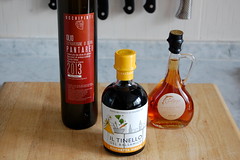

Olive oil from Occhipinti, balsamic vinegar (I couldn't resist the cute packaging), and colatura oil, an oil made from pressed anchovies that's a specialty of Cetara.
Wines: Occhipinti SP68 and Frappato, Passopisciaro 2012, Bue Apis, and we also recommend the COS Cerasuolo di Vittorio, Graci Etna Rosso, and Valle del Acate Cerasuolo di Vittorio.
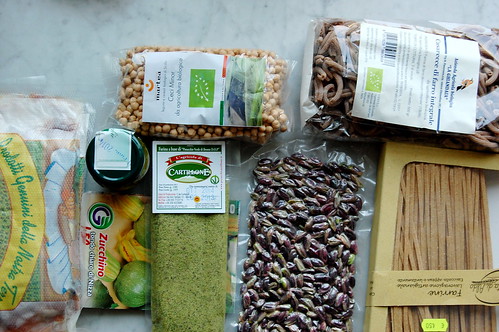
Prosciutto, pistachios in all forms from Bronte (whole, powdered, and paste), the tiniest cutest chickpeas, two kinds of farro pasta, and seeds for zucchini, cherry tomatoes, and arugula.
Back soon with a recipe!
27 October 2013
Sizzled Eggplant with Yogurt and Almonds
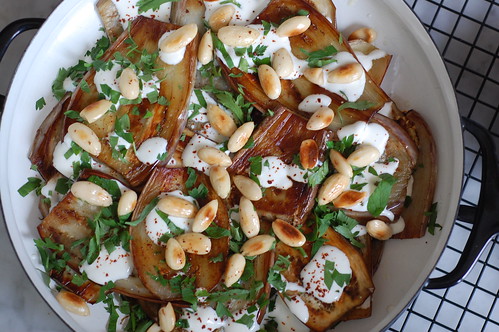
Olive JarBy Naomi Shihab Nye
In the corner of every Arab kitchen,
an enormous plastic container
of olives is waiting for another meal.
Green tight-skinned olives,
planets with slightly pointed ends—
after breakfast, lunch, each plate
hosts a pyramid of pits in one corner.
Hands cross in the center
of the table over the olive bowl.
If there are any left they go back to
the olive jar to soak again with sliced lemon and oil.
Everyone says
it was a good year for the trees.
At the border an Israeli crossing-guard asked
where I was going in Israel.
To the West Bank, I said. To a village of
olives and almonds.
To see my people.
What kind of people? Arab people?
Uncles and aunts, grandmother, first and second
cousins. Olive-gatherers.
Do you plan to speak with anyone? he said.
His voice was harder
and harder, bitten between the teeth.
I wanted to say, No, I have come all this way
for a silent reunion.
But he held my passport in his hands.
Yes, I said, We will talk a little bit. Families and
weddings,
my father's preference in shoes, our grandmother's
love for sweaters.
We will share steaming glasses of tea,
the sweetness filling our throats.
Someone will laugh long and loosely,
so tears cloud my voice: O space of ocean waves,
how long you tumble between us, how little you
dissolve.
We will eat cabbage rolls, rice with sugar and milk,
crisply sizzled eggplant. When the olives come
sailing past
in their little white boat, we will line them
on our plates
like punctuation. What do governments have to do
with such pleasure? Question mark.
YES I love you! Swooping exclamation.
Or the indelible thesis statement:
it is with great dignity
we press you to our lips.
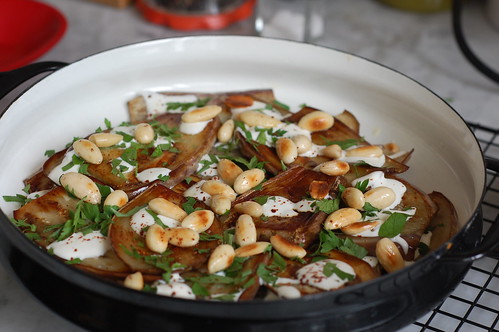
Sizzled Eggplant with Yogurt and Almonds
Slices of eggplant sauteed in a pan with generous amounts of olive oil until melting and tender on the inside but just crisped on the outside. They truly sizzle as they cook. A simple topping of thick yogurt and some almonds and parsley.
4-5 small size (5-6 inches long) firm eggplant
olive oil
salt
1 cup plain Greek-style yogurt or labane
1 small lemon
1/2 cup chopped parsley
1/2 cup blanched almonds
pinch or two of Aleppo pepper or other mild chili pepper
equipment: optional, but a splatter screen is nice to have here
1. Trim off the top and bottom of the eggplant and then slice it vertically into thick strips. Sprinkle salt on one side of the strip.
2. Heat a generous amount of olive oil in a large pan over medium (not high!) heat. The olive oil should fill the bottom of the pan by about 1/4 inch deep. When the olive oil is hot, add the first batch of eggplant slices, salt-side up, being sure not to overcrowd the pan. Cook until lightly browned on the first side and the eggplant is almost totally tender when pierced with a knife, this could take as long as five to seven minutes. Flip the eggplant slices over as they are ready, sprinkle the opposite sides with salt, and let cook until browned and lightly crisped on the outside, but still very tender in the middle. Keep an eye on the heat and adjust it as necessary. Remove eggplant slices to drain on paper towels.
3. Repeat the process in batches with the remaining eggplant slices, topping up the olive oil as necessary.
4. Place your yogurt in a bowl and zest the lemon into the bowl. Halve the lemon and squeeze the lemon juice from half the lemon into the yogurt. Season with a big pinch of salt and stir to mix well.
5. Arrange a layer of eggplant slices in the bottom of your dish. Drizzle some yogurt, sprinkle parlsey and Aleppo pepper over top. Repeat the layering of eggplant with yogurt, herbs and spice.
6. Finally, heat up that same pan you were using for the eggplant, and saute the almonds in the pan until lightly browned all over. Pour the toasted almonds over the top of the eggplant, sprinkle with salt, and serve.
20 October 2013
Grilled Fruit Salad with Crisped Speck, Goat Cheese, and Pecans
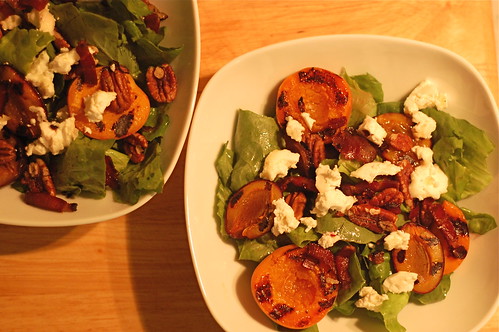
My friends. I have recently become fascinated with this thing you call Pinterest. Apparently, it's a pin board, and as far as I can tell, people use them to pin millions of hair style ideas for their wedding. And also to plan their wedding, when they are not, in fact, expecting to get married anytime soon. So it's confusing. Forgive me if I'm a little slow, but I do live in North Africa, and the internets are not so great here.
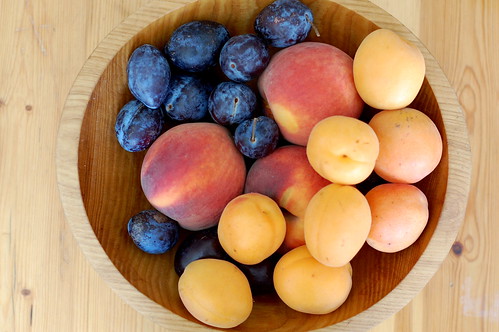
But what I have really become obsessed with is why and how people use Pinterest to pin recipes. Or really not-recipes, as I like to call them. Based on a recent analysis of the most popular food posts on Pinterest, I have broken them down into the following categories for you:
- I'm on this stupid diet and I'll do anything to get around it (see: Paleo cinnamon rolls, Vegan bacon, Paleo burritos)
- At least 90% of the recipes are made in a crockpot using store-bought mixes. Hint: combining some chicken and two sauce packs is not cooking. Also, if you were wondering why America has an obesity problem, here's a hint.
- How to make food not look like food! (Bacon turtles)
- Food coloring 101
- Pretty pictures of food that do not, in fact, actually link to a recipe.
On another level, I will admit that I find myself so removed from this phenomenon because, well, I live in Algeria. I live somewhere where there is NO store-bought mix option. There's no boneless skinless chicken breast option, unless you're doing the butchering yourself, there's no bottled barbeque sauce. When my greengrocer tells me the strawberries are good this week, I ask whether they're local or imported, because I know the imported ones are five-times the price. I live somewhere where when I go to the market in the morning and the watermelon guy is offloading watermelons from his truck, it's not all "ohh I met the farmer" and it's so good to know where he comes from and "farm to table." It's just a guy and his watermelons because that's the way it is. Where my carrots shrivel up and get all soft two days after I buy them, because that's what carrots SHOULD do.

So yes, I got all ranty. Fine. But here's the thing, I have a Pinterest account. And the other day, I saw a recipe for a cake with smoked fruit. That smoked fruit thing really stuck in my head, and it rattled around in there for a while. And I thought of a salad with smoked fruit. And that salad with smoked fruit, well I sort of become obsessed with it. And I made it, and it was delicious. (If you're lazy, just grilling the fruit, or sauteeing in a grill pan also works). So, I guess this whole Pinterest sharing idea thing works out after all. Just don't expect me to be posting the recipe for jello cookies anytime soon.
**We're currently eating our way through Sicily, if you're interested in following along with our fooding adventures (spleen sandwiches! wineries! gelato!), click on the Instagram link at the top right of the page.**
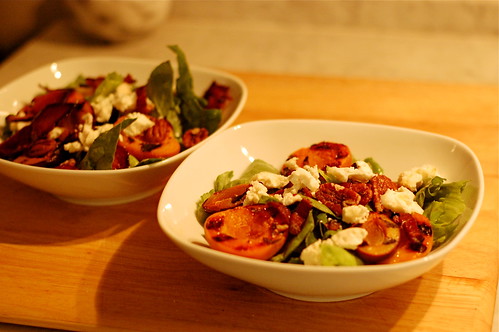
Grilled Fruit Salad with Crisped Speck, Goat Cheese, and Pecans
Honestly, I don't think anyone really needs quantities for a salad recipe. I mean, I'm assuming you can make a salad right? Make enough for however many people you want to serve. I promise, it will be okay.
stone fruits, firm-ripe, pitted and halved (I used prune plums, apricots, and peaches)
speck, cut into batons (bacon can also work)
goat cheese, crumbled
pecans
torn lettuce, we used a kind of butter lettuce, but whatever you'd like
vinaigrette: olive oil, white wine vinegar, salt
black pepper
1. Mix together your vinaigrette - you want two parts oil to one part vinegar, then season with salt.
2. In a small pan, crisp the speck over medium heat until crispy and some of the fat in rendered out, Drain on a paper towel. Using the same pan, toast the pecans in the rendered fat. Drain pecans on a paper towel and sprinkle with salt.
3. Preheat a grill, a smoker box, or a grill pan, rub lightly with oil. Grill the fruit, cut side down first, until nice solid grill marks appear, about 3-5 minutes. Flip the fruit and grill another 2-5 minutes on the other side, until browned but not falling apart. Set aside.
4. Assemble the salad. Toss the lettuce with the dressing in a large bowl. Arrange the pecans, speck, fruit and goat cheese over top. Crack some black pepper over the whole thing. Serve with a knife and fork.

